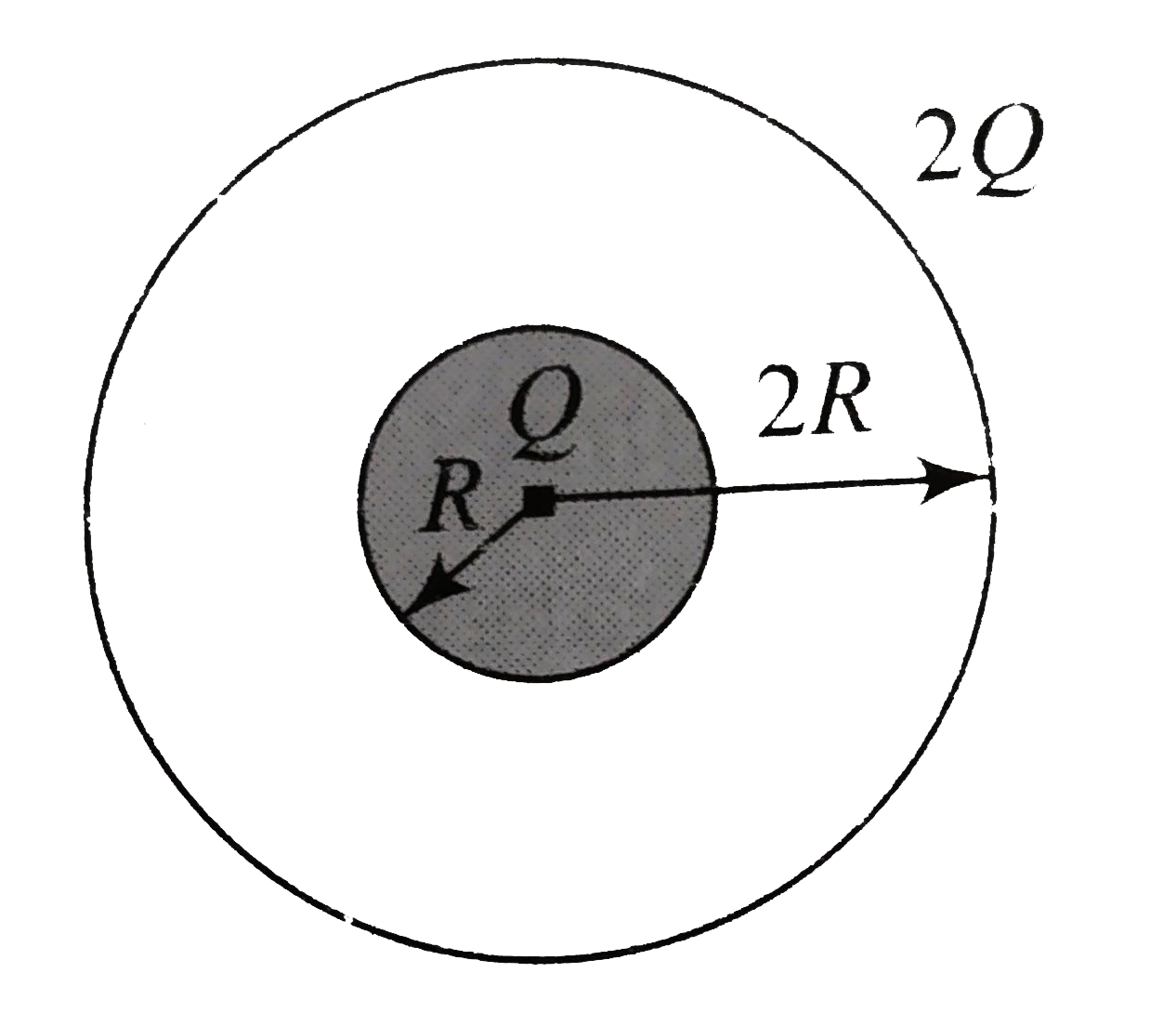Consider the force F on a charge 'q' due to a uniformlycharged spherical shell of radius R carrying charge Q distributed uniformly over it. Which one of the following statements is true for F, if 'q' is placed at distacen r from the centre of the shell?
Option1 F=14π∈0QqR2 for r<R
Option2 F=14π∈0qQR2>F>0 for r<R
Option3 F−14π∈0Qqr2 for r>R
Option4 F=14π∈0Qqr2 for all r
To solve the problem, we need to analyze the force F on a charge q placed at a distance r from the center of a uniformly charged spherical shell of radius R and total charge Q. We will consider three different cases based on the value of r relative to R.
1. Understanding the Regions:
- Case 1: When r<R (inside the shell)
- Case 2: When r=R (on the surface of the shell)
- Case 3: When r>R (outside the shell)
2. Electric Field Inside the Shell:
- According to Gauss's law, the electric field E inside a uniformly charged spherical shell is zero. Therefore, for r<R:
E=0
- The force F on charge q is given by:
F=qE=q⋅0=0
3. Electric Field On the Surface of the Shell:
- At the surface of the shell (when r=R), the electric field E is given by:
E=14πϵ0⋅QR2
- The force F on charge q is:
F=qE=q⋅14πϵ0⋅QR2
4. Electric Field Outside the Shell:
- For r>R, the electric field behaves as if all the charge Q were concentrated at the center of the shell. Thus:
E=14πϵ0⋅Qr2
- The force F on charge q is:
F=qE=q⋅14πϵ0⋅Qr2
5. Conclusion:
- From the analysis:
- For r<R, F=0
- For r=R, F=qQ4πϵ0R2
- For r>R, F=qQ4πϵ0r2
- Therefore, the correct statement regarding the force F is that it is zero when r<R.
Final Answer:
The correct statement is that the force F is zero when r<R.
- Case 1: When r<R (inside the shell)
- Case 2: When r=R (on the surface of the shell)
- Case 3: When r>R (outside the shell)
- According to Gauss's law, the electric field E inside a uniformly charged spherical shell is zero. Therefore, for r<R:
E=0
- The force F on charge q is given by:
F=qE=q⋅0=0
- At the surface of the shell (when r=R), the electric field E is given by:
E=14πϵ0⋅QR2
- The force F on charge q is:
F=qE=q⋅14πϵ0⋅QR2
- For r>R, the electric field behaves as if all the charge Q were concentrated at the center of the shell. Thus:
E=14πϵ0⋅Qr2
- The force F on charge q is:
F=qE=q⋅14πϵ0⋅Qr2
- From the analysis:
- For r<R, F=0
- For r=R, F=qQ4πϵ0R2
- For r>R, F=qQ4πϵ0r2
- Therefore, the correct statement regarding the force F is that it is zero when r<R.
The correct statement is that the force F is zero when r<R.
Topper's Solved these Questions
Similar Questions
Find out energy stored in the electric field of uniformly charged thin spherical shell of total charge Q and radius R.
View SolutionA thin spherical conducting shell of radius R has a charge q. Another charge Q is placed at the centre of the shell. The electrostatic potential at a point P a distance R2 from the centre of the shell is
View SolutionA thin spherical conducting shell of radius R has a charge q. Another charge Q is placed at the centre of the shell. The electrostatic potential at a point P a distance R/2 from the centre of the shell is
View SolutionA conducting shell of radius R carries charge–Q. A point charge +Q is placed at the centre of shell. The electric field E varies with distance r (from the centre of the shell) as :
View SolutionA spherical shell of radius R has a uniformly distributed charge ,then electric field varies as
View SolutionThe electrostatic potential of a uniformly charged thin spherical shell of charge Q and radius R at a distance r from the centre
View SolutionA charge Q is uniformly distributed in a dielectric sphere of radius R (having dielectric constant unity). This dielectric sphere is enclosed by a concentric spherical shell of radius 2R and having uniformly distributed charge 2Q. Which of the following graph correctly represents variation of electric field with distance r from the common centre?

View SolutionA spherical shell of radius R=1.5cm has a charge q=20μC uniformly distributed over it. The force exerted by one half over the other half is
View SolutionA thin spherical shell of radius R has charge Q spread uniformly over its surface. Which of the following graphs most closely represents the electric field E(r) produced by the shell in the range 0≤r<∞, where r is the distance from the centre of the shell?
View SolutionA thin spherical shell of radius R has charge Q spread uniformly over its surface. Which of the following graphs most closely represents the electric field E(r) produced by the shell in the range 0≤r<∞, where r is the distance from the centre of the shell?
View Solution
